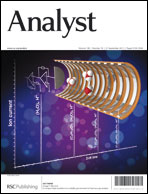Kaajal fights against eye pathogens and is safe for eye make-up: a reinvestigation of an ancient practice†
Abstract
The present report includes a scientific view of the traditional use of ‘Kaajal’ from the leaf of Euphorbia neriifolia, an Indian spurge tree locally called the ‘Monosha’ plant. A thorough analysis of the material demonstrates that it contains carbon


 Please wait while we load your content...
Please wait while we load your content...